Glyphosate is one of the best-selling and most used herbicides worldwide. It is the active ingredient in Monsanto's Roundup and countless other weedkillers. These herbicides are commonly used in farming, and public spaces like parks, streets, schools and playgrounds. They are also used domestically in gardens and on allotments.
Glyphosate weed killers like Roundup are used in the production of genetically modified crops. GMOs are herbicide-resistant, but the weeds and other natural vegetation growing around them are not. Glyphosate is designed to move throughout non-GMO plants and kill them by blocking the plant's ability to make proteins.
In this article, we'll discuss the increasing problem of glyphosate in drinking water – and why you'd be well-served removing it.
The widespread use of Glyphosate
Worryingly, the use of glyphosate is not exclusively used on GMO crops and is approved in Europe, including the UK, for many other purposes.
According to the Friend’s of the Earth Europe (FOEE), it is also allowed for use in vineyards, olive groves, fruit orchards, grass pastures, forestry and sensitive habitats (think of the effect this has on wildlife).
It is sprayed on cereal crops including wheat and oats, oilseed rape, maize and sunflowers. It is everywhere.
The FOEE also state “based on what has happened in the United States since the introduction of GM crops, it has been predicted that the introduction of GM glyphosate-resistant sugar beet, maize and soybean in the European Union could lead to an 800% increase in glyphosate use by 2025, with overall herbicide use going up by 72% compared to current levels.”
Glyphosate has significant health and cancer risks
In 2015, the World Health Organisation (WHO) stated that “Glyphosate currently has the highest global production volume of all herbicides” and over recent years, a growing number of scientific studies have raised concerns over this invasive herbicide.
This year, Austria was the first EU country to ban glyphosate entirely. According to Reuters, the leader of Austria’s Social Democrats, Pamela Rendi-Wagner, said “The scientific evidence of the plant poison’s carcinogenic effect is increasing. It is our responsibility to ban this poison from our environment.”
In 2018, a US jury awarded £226million to a man who claimed Monsanto herbicides containing glyphosate had caused his cancer.
According to the BBC, jurors in San Francisco found that the company’s weedkillers contributed “substantially” to the terminal illness of groundskeeper Dewayne Johnson, diagnosed with non-Hodgkin’s lymphoma in 2014. He regularly used a form of RangerPro while working at a school in Benicia, California.
The ruling said that the potential product risks were known to Monsanto who failed to adequately warn of the danger. The jurors found that the company had acted with “malice” and a product label providing warning of the potential health dangers should have been given.
In 2019, a US federal jury in California ruled that Monsanto’s Roundup, which he had sprayed for nearly 30 years, was responsible for Edwin Hardeman’s non-Hodgkins lymphoma. On the back of this, several UK councils have growing concerns about the safety of glyphosate products which they have been using in public spaces for years and are looking to phase them out. Fingers crossed.
According to a 2008 Swedish study, exposure to glyphosate can triple the risk of non-Hodgkin lymphoma. Researchers also found that there is a latency period between exposure and diagnosis and the risk increases after ten years of glyphosate exposure.
There’s no denying that Monsanto and organisations like the US Environmental Protection Agency (EPA) state that glyphosate “is not carcinogenic to humans” but many people believe that research showing this is often paid for by Monsanto or biased towards them for various reasons.
Environmental Sciences Europe published a report in January 2019 showing that the EPA ignored scientific research showing that glyphosate causes cancer. The EPA’s opinion on the cancer-glyphosate risk is polar to that of the International Agency for Research on Cancer (IARC) who classified glyphosate as “probably carcinogenic to humans (Group 2A).”
The IARC concludes there is “strong evidence” that exposure to glyphosate is genotoxic through at least two mechanisms known to be associated with human carcinogens (DNA damage and oxidative stress).
Glyphosate has caused DNA and chromosomal damage in human cells and one study in community residents reported increases in blood markers of chromosomal damage (micronuclei) after glyphosate formulations were sprayed nearby.
Read the report and decide for yourself who’s right, or who’s wrong and what you think the dangers are. You can also read the 2015 IARC report and the research and reasoning behind their conclusion here.
The EWG also states that since the 2015 IARC assessment (associated with WHO), an additional 26 of 27 studies have been published showing evidence that glyphosate can be genotoxic (affecting DNA and RNA in animals and humans).
Additionally, in 2017, California’s Office of Environmental Health Hazard Assessment listed glyphosate as a chemical “known to the state of California to cause cancer.”
There is also convincing evidence that glyphosate can cause cancer in laboratory animals, including cancerous tumours.
Glyphosate can wreck gut health & contribute to chronic disease

Research shows that glyphosate has detrimental effects on gut microbiota, can inhibit the activity of cytochrome P450 enzymes, and likely impair sulfate transport.
In the words of the report, this can “remarkably explain a great number of the diseases and conditions that are prevalent in the modern industrialised world. Its effects are insidious because the long-term effects are often not immediately apparent.
“The pathologies to which glyphosate could plausibly contribute, through its known biosemiotic effects, include inflammatory bowel disease, Entropy 2013, 15 1445 obesity, depression, ADHD, autism, Alzheimer’s disease, Parkinson’s disease, ALS, multiple sclerosis, cancer, cachexia, infertility, and developmental malformations.”
They close by saying:
“Given the known toxic effects of glyphosate reviewed here and the plausibility that they are negatively impacting health worldwide, it is imperative for more independent research to take place to validate the ideas presented here, and to take immediate action, if they are verified, to drastically curtail the use of glyphosate in agriculture.
“Glyphosate is likely to be pervasive in our food supply, and, contrary to being essentially nontoxic, it may, in fact, be the most biologically disruptive chemical in our environment.”
Research also links glyphosate to Parkinson’s disease. Other ingredients in glyphosate products such as Roundup are toxic and harmful, even without glyphosate. Distressingly, when mixed with glyphosate, the toxicity is magnified.
Researchers claim that “the proprietary mixtures available on the market could cause cell damage and even death around residual levels to be expected, especially in food and feed derived from R formulation-treated crops.”
Glyphosate residues are showing up in people
In August of this year, newly developed long-term exposure hair testing of 23 Japanese politicians revealed exposure to a host of pesticides and herbicides, the most alarming of which was glyphosate and its metabolite AMPA (also harmful).
Apparently, the test revealed much higher levels of contamination than ever detected with blood and urine testing.
Aside from concerns about food safety, foreign wheat imports were called out due to the practice of pre-harvest spraying, a frequently used technique that non-organic farmers use to dry out crops before harvesting.
In 2013, FOEE performed research which detected glyphosate residues in the urine of 44% of people tested, from 18 different European countries.
A 2019 review of 19 studies set out to determine the levels of exposure to glyphosate in both those who work with it and the general population.
Eight studies showed urinary levels of glyphosate in both occupationally and para-occupationally exposed participants. Fourteen studies reported evidence of glyphosate in various biofluids (such as blood, urine, sweat, breast milk) of 3,298 people from the general population.
Only two studies in this review looked at exposure over time, but both showed increasing proportions of individuals with detectable levels of glyphosate in their urine.
Clearly, there’s not enough research investigating the amount of glyphosate exposure we are subjected to via our environment and food chain. And who knows the potentially destructive effects it can have on infants and children?
Glyphosate is in your drinking water

A 2017 Chief Inspector’s Report for drinking water in England showed two failures by water companies to keep glyphosate levels within the European or national standard.
Firstly, given the lack of research in the area of exposure and its long-term effects, how do we know that these standards are safe?
Secondly, the water companies put the failures down to domestic use of glyphosate but could it just have easily have been down to its widespread use in farming and by local councils?
According to Pesticide Action UK, studies by the UK government show that pesticide concentrations exceed those allowable for drinking water in some samples of river water and groundwater (it’s heartbreaking to think of all the wildlife living in and off this water).
Pesticides and herbicides, including glyphosate, can be washed by rain into ditches, rivers and streams (surface waters). They might also get washed down through soil and rock and into underground water sources (groundwater).
Urban run-off from pavements, parks, schools and gardens can likewise flow into waterways. Surface waters can run off into reservoirs and groundwater contributes to roughly 30% of UK drinking water.
FOEE state that The European Glyphosate Environmental Information Sources (EGEIS) summarised surface water monitoring data from 1993-2009 for thirteen European countries.
Over 50,000 samples were included, and glyphosate was found in 29% of these samples.
Residues of glyphosate’s breakdown product (AMPA) were found in 50% of samples (this comes with its own collection of health concerns. Look it up.)
This is just a small proportion of the mounting information and evidence that’s out there concerning contamination of our waterways. In the US, where GMO crops are more widely used, glyphosate contamination is higher.
It’s worrying to think that should GMO glyphosate-resistant produce become approved in the EU, glyphosate contamination, not just of water but throughout the environment, could become much more widespread.
If you want to reduce your exposure to glyphosate and other chemicals in your drinking water, you would be wise to invest in a comprehensive water filter system to remove glyphosate, pesticides, pharmaceutical residues and hormone residues.
Our Energy Plus Undersink Filter does just that. It will also transform your water into alkaline, antioxidant water with good structure. Extensively tested by the University of Edinburgh, the Energy Plus is – in our view – the most complete undersink water filtration system on the market today.
Glyphosate is lurking in your food
As well as using Roundup and other herbicides to clear the weeds, farmers are also using glyphosate to dry out the crops shortly before harvest. It helps hasten the ‘dry down’ (particularly when damp or wet), controls grain weeds and kills crops that haven’t ripened evenly.
This speeds up threshing practice as it enables combine harvesters to move faster and cover more ground.
Unfortunately, as the Soil Association points out, this also means glyphosate residues in the crops are likely to be higher. And these end up on your plate.
When you think about all the crops glyphosate is allowed to be used on in Europe, it is in your wine, olive oil, on your fruit and vegetables, in your cereal, porridge and bread, and on your seeds. And the rest.
To reduce your intake of glyphosate and other chemicals, it’s advisable to buy organic wherever possible. Can’t buy organic? You can at least try to avoid the Dirty Dozen, by checking the annually updated list by the EWG of the most heavily sprayed fruit and vegetables.
How else might I be exposed to glyphosate?
You can be heavily exposed to glyphosate if you work directly with it or are exposed to it in your work environment. For those of us in the general population, we are exposed to it environmentally.
Imagine if you are living in a rural area with heavy crop spraying, or are relaxing with family and friends in your local park while glyphosate is being used nearby, and mists of the weedkiller drift by on the breeze?
Children, dogs and cats, other pets, birds, insects and wild animals could be lying and walking barefoot where it is sprayed on the grass.
Pets and wildlife are at risk if they touch or eat plants that are still wet with spray from products containing glyphosate.
Conclusion
While many things in life are beyond our control, if we are informed about certain things, we can decide what – if anything – we can do about them.
When it comes to glyphosate, there are practices you can put in place to protect yourself and your family. Overall, think about the accumulation of exposure from different sources and do your best to limit this.
Using a superior water filter that removes glyphosate and other herbicides or pesticides, along with any other undesirable contaminants in tap water, is a very good idea.
Wherever possible, eat organic. These foods aren’t sprayed with glyphosate. A bonus is that glyphosate demineralises the soil and organic soil is much higher in minerals. This benefits both you and the environment.
If eating organic isn’t feasible, get savvy about the most heavily sprayed fruits and vegetables and try to avoid them. The EWG provides an annually updated list of the most heavily sprayed ones. Although it is American, it’s still a helpful guide for those of us in Europe.
Use organic, natural treatments on your allotment and in your garden and petition your local council to find safer alternatives to glyphosate and other harmful herbicides and pesticides.
Written by Rebecca Rychlik-Cunning, Nutritional Therapist and Homeopath. Follow Rebecca on Instagram, Facebook and Medium, @rebeccabitesback.




















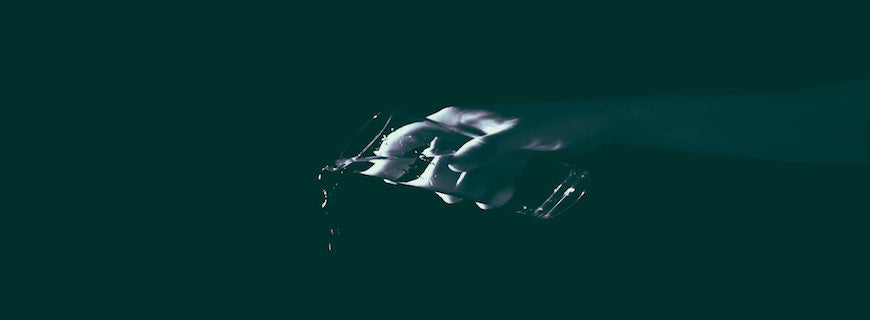



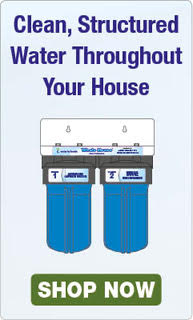
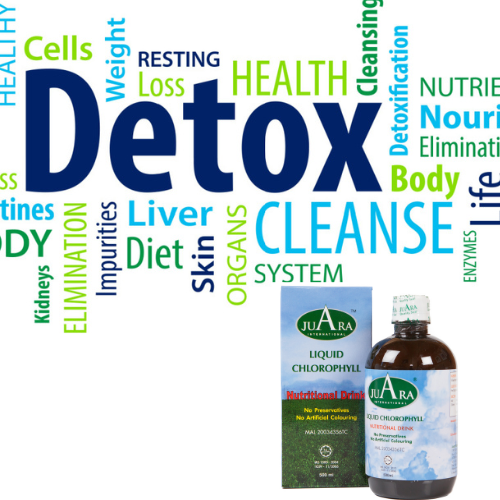
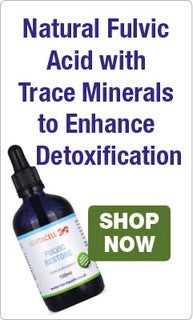
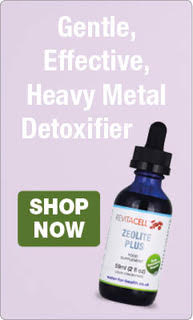
Leave a comment